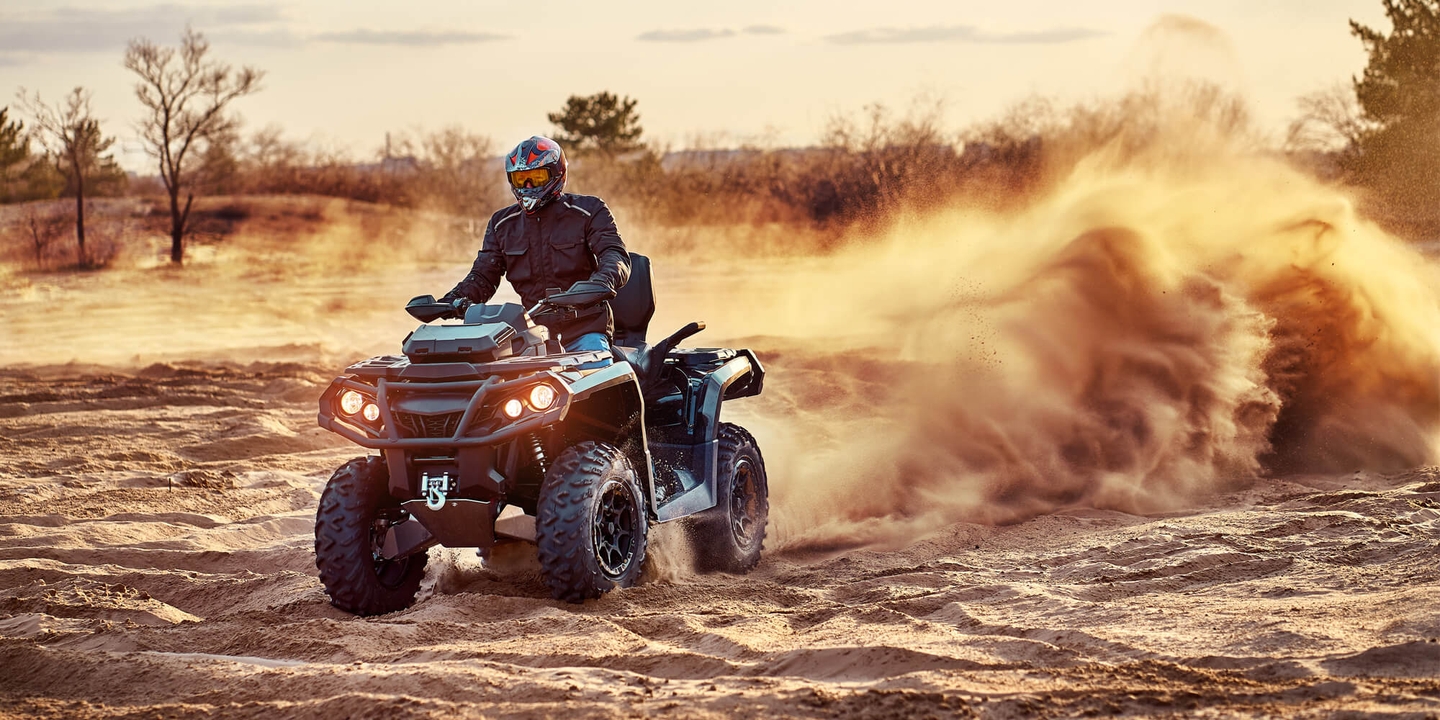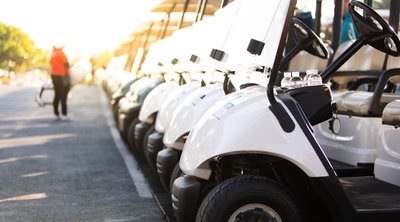ATV maintenance tips
4 min read
Maintaining an ATV is an important part of ownership. Proper maintenance keeps your ATV running smoothly, gives it a longer life, and ensures your safety while riding. Failure to perform routine maintenance can result in costly repairs and even serious injury. Routinely inspect your entire ATV including tires, brakes, and fluids, and follow a maintenance schedule.
ATV maintenance and inspection checklist
Routinely test, inspect, or check these parts to properly maintain an ATV:
Tires
Inspect your tires for cracks, worn tread, and proper inflation. If your tires are balding, it may be time to replace them. Before you ride, you should always check the air pressure in your tires with a tire pressure gauge. Consult your owner's manual for the recommended tire pressure for your ATV, and inflate or deflate as needed with an air compressor.
Brakes
The easiest way to test your brakes is by squeezing the brake levers. If the brakes feel weak, spongy, or if they audibly squeak, you likely need to replace them. The source of the issue could be the brake pads or shoes. If the pads or shoes appear thin, they may need to be replaced. Also check your brake discs, lines, and hoses for warping, cracks, or bulges that indicate excessive wear. You may also need to replace the brake fluid if it's dark or dirty.
Fluids
In addition to checking your brake fluid, it's important to check the levels of your engine oil, coolant, and fuel system. Leaks and puddles under your ATV indicate a potential problem.
Chain
If your ATV uses a chain, inspect it for rust or kinks. Another sign of an overused or faulty chain is if the sprockets have broken or misshaped teeth. You should also adjust the tension of the chain as directed by your owner's manual. Once you've fully inspected the chain and replaced or fixed the chain, use chain lube as part of your regular maintenance routine.
Belt
If your ATV uses a belt, check for fraying, cracks, or general wear and tear. If the belt is thin or shows signs of stress, it should be replaced. Similar to maintaining a chain, you should adjust the belt tension to the recommended measurements of the owner's manual. You should not, however, apply lube to a belt. Instead, use an air compressor to clean and maintain the belt.
Lights
Double check that the headlights, taillights, brake lights, and any other electronic features work properly. For your own ATV safety as well as the safety of others, don't ignore or neglect a dim bulb or broken light.
Filters
Check the air, oil, and fuel filters on a regular basis. Inspect the air filter for excessive clogging due to dirt and dust. If it's damaged, replace the filter. Inspect the oil filter during every oil change. Many filters are disposable, so you can replace it at that time. Inspect the fuel filter for clogging due to dirt and debris. If your ATV is struggling to start, you may need to replace the filter to open the flow of fuel.
Battery
Check the battery for corrosion, loose cables, and any cracks or leaks. A great way to test the health of your battery is using a multimeter to measure the battery's voltage. A fully charged battery typically measures 12.6 volts when the engine is off. A battery that measures below 11.5 volts should be replaced. It should be also be replaced if it won't hold a charge.
Suspension and bearings
Checking the condition of the suspension and bearings ensures that your ATV rides smoothly. A healthy suspension should react with control. If your ATV is bouncing excessively, you may need to replace the shocks. Check that your wheels rotate smoothly, and your handlebars aren't stiff. If your wheels feel wobbly or steering is difficult, you may need to replace the wheel and steering bearings.
Cosmetic inspection
Take a close look at the exterior cosmetic appearance of the ATV. Clean any dirt, mud, or debris from the body, and look for any cracks or damage. Don't neglect any dents or other cosmetic issues, as they can potentially affect the performance and value of your ATV.
Follow an ATV maintenance schedule
Regular tune-ups are essential for a quality riding experience and prolonging the life of your ATV. Even if you usually perform your own ATV maintenance, mechanics recommend that you schedule a professional tune-up or ATV inspection on a regular schedule. Having a trained mechanic inspect your ATV can help identify and repair any issues you may have missed.
Be proactive in prepping your ATV and following an ATV maintenance checklist. Each year, check the condition of your vehicle before winter is over so you can get ahead of the spring maintenance rush. You'll be able to start enjoying your ATV as soon as the season starts. And before hitting your favorite ATV trails, find out how to protect your vehicle with ATV insurance and how ATV insurance works.


